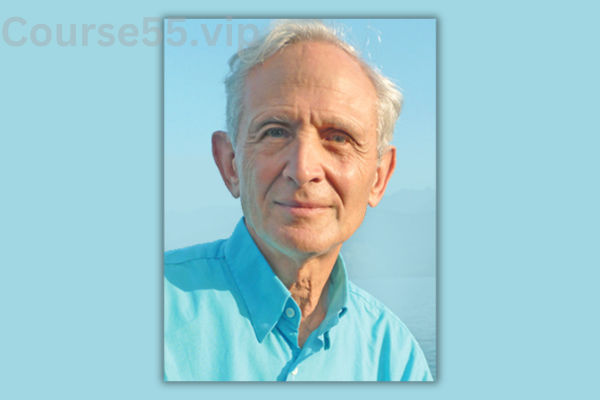How to Work with the Part of Trauma That Your Patient Can’t Verbalize By Peter Levine – NICABM
$197.00 Original price was: $197.00.$15.40Current price is: $15.40.
Exploring Peter Levine’s Course: Working with the Non-Verbal Aspects of Trauma – Digital Download!

How to Work with the Part of Trauma That Your Patient Can’t Verbalize By Peter Levine – NICABM
Overview

A Deep Dive into Peter Levine’s Training: Navigating the Unspoken Dimensions of Trauma
In an era where grasping the profound effects of trauma is essential for therapeutic work, Peter Levine’s program, How to Work with the Part of Trauma That Can’t Be Verbalized, provides therapists with crucial strategies for addressing the silent layers of traumatic experiences. This course shines a light on the significance of engaging with aspects of trauma that clients often find impossible to verbalize, helping practitioners expand their therapeutic tools. In this overview, we will unpack Levine’s method, stress the value of establishing safety in therapy, and outline actionable techniques drawn from the course.
Building Safety as the Foundation for Healing Trauma
A central theme in Levine’s course is the critical role of creating a secure environment for clients processing trauma. Without a deep sense of safety, clients may struggle to fully participate in therapy and move through their healing journey. This insight is consistent with broader trauma research, which identifies safety as the cornerstone of meaningful recovery.
Establishing safety means addressing not just physical needs, but emotional and psychological security as well. Therapists can nurture this by practicing active listening, affirming client emotions, and maintaining a compassionate, judgment-free space. Such an environment empowers clients to express themselves more openly, even when words fail them. Levine explains that when patients feel genuinely secure, they are more likely to explore their bodily memories and sensations, opening the door to profound therapeutic work.
Somatic experiencing, a technique central to Levine’s work, furthers this process. By helping clients tune into their innate bodily responses and instinctual patterns, therapists can support deeper insights that often lie beyond cognitive awareness. This union of body and emotion lays the groundwork for a more complete healing experience, making therapy a safer, more empowering space for clients.
Recognizing the Limits of Words in Trauma Therapy
Another pivotal concept in Levine’s course is the critique of conventional therapeutic models that overly emphasize verbal dialogue and cognitive exploration. Traditional talk therapy tends to favor stories, discussions, and conscious recollection. However, Levine challenges this bias by highlighting how trauma often exists in realms words cannot easily access.
Consider clients who cannot articulate their emotional pain. Their bodies might display tightness, aches, or involuntary movements — silent yet powerful indicators of unresolved trauma. These somatic expressions reveal experiences that verbal communication may obscure or miss entirely.
Levine urges therapists to adjust their methods to meet each client’s individual needs. In trauma work especially, a one-size-fits-all approach is often ineffective. By acknowledging and working with these silent forms of communication, practitioners can create more personalized, responsive interventions, helping clients navigate their healing journeys with greater authenticity and effectiveness.
Practical Strategies for Addressing Non-Verbal Trauma
Levine enriches his course with case examples and tangible techniques designed to support clients in connecting with unspoken trauma. Movement-based therapy stands out among these methods. Encouraging clients to express their internal experiences through bodily movements — from subtle tremors to strong grounding actions — can unlock deeply held trauma and facilitate somatic release.
For example, a therapist might guide a client to respond to inner sensations by moving in specific ways, whether that involves simple foot grounding, gentle swaying, or larger expressive motions. This engagement helps reconnect clients with their bodies and fosters the discharge of trapped emotional energy, leading to greater integration and healing.
Creative arts such as drawing, painting, or expressive dance also offer powerful non-verbal outlets. These activities allow clients to externalize their internal landscapes when words prove inadequate. By offering multiple channels for expression, therapists can help patients break through barriers and experience significant emotional shifts during the therapeutic process.
Integrating Body and Mind for Comprehensive Trauma Healing
Levine’s teachings highlight the intricate interplay between mind and body in the context of trauma, emphasizing the need for a holistic, somatic-centered therapeutic approach. By working with the parts of trauma that remain unspeakable, therapists can help clients reclaim a sense of ownership over their bodies and experiences, unlocking avenues of healing that traditional methods might overlook.
This integrative approach has broader implications for the field of therapy. Training practitioners to detect and engage with non-verbal trauma signals fosters a more adaptable, client-centered framework, moving beyond rigid, verbal-centric models. Therapists who adopt this lens are better equipped to guide clients through complex, individualized healing processes.
Empirical research supports the effectiveness of somatic therapies. A study in the Journal of Bodywork and Movement Therapies found that participants receiving body-focused trauma treatments reported greater improvements in PTSD symptoms compared to those undergoing standard talk therapy. Such findings reinforce Levine’s approach, underscoring its value in modern therapeutic practices.
Final Thoughts
Peter Levine’s course on navigating the non-verbal facets of trauma offers transformative insights for therapists seeking to deepen their trauma-informed practices. By prioritizing safety, understanding the limits of verbalization, and incorporating somatic and creative techniques, practitioners can significantly expand their capacity to support clients on their healing journeys.
Levine’s holistic philosophy challenges the dominance of verbal-centric therapy models, advocating for a more inclusive, body-aware framework that honors the full spectrum of human experience. By tuning into the silent dimensions of trauma, therapists can foster more profound emotional recovery, helping clients rebuild resilience and reclaim their narratives in empowering, embodied ways.
With a deeper grasp of Levine’s teachings, therapists are better prepared to create healing environments that genuinely support recovery, ensuring that each client’s unique, complex story is acknowledged, respected, and healed.
Frequently Asked Questions:
Business Model Innovation: We operate a group buying strategy, allowing participants to share costs and access popular courses at reduced prices. This model benefits individuals with limited financial resources, despite concerns from content creators about distribution methods.
Legal Considerations: The legality of our operations involves complex issues. Although we don’t have explicit permission from course creators to resell their content, there are no specific resale restrictions stated at the time of purchase. This ambiguity creates an opportunity for us to provide affordable educational resources.
Quality Control: We ensure that all course materials purchased are identical to those offered directly by the creators. However, it’s important to understand that we are not official providers. As such, our offerings do not include:
– Live coaching calls or sessions with the course author.
– Access to exclusive author-controlled groups or portals.
– Membership in private forums.
– Direct email support from the author or their team.
We aim to reduce the cost barrier in education by offering these courses independently, without the premium services available through official channels. We appreciate your understanding of our unique approach.
Be the first to review “How to Work with the Part of Trauma That Your Patient Can’t Verbalize By Peter Levine – NICABM” Cancel reply
You must be logged in to post a review.

 Healthy Hormone Done-For-You By Lorene Sauro
Healthy Hormone Done-For-You By Lorene Sauro  Black Gold Strategies by Basecamptrading
Black Gold Strategies by Basecamptrading  Intermediate To Advanced Breath-Control Course By Simon Borg-Olivier
Intermediate To Advanced Breath-Control Course By Simon Borg-Olivier 















Reviews
There are no reviews yet.